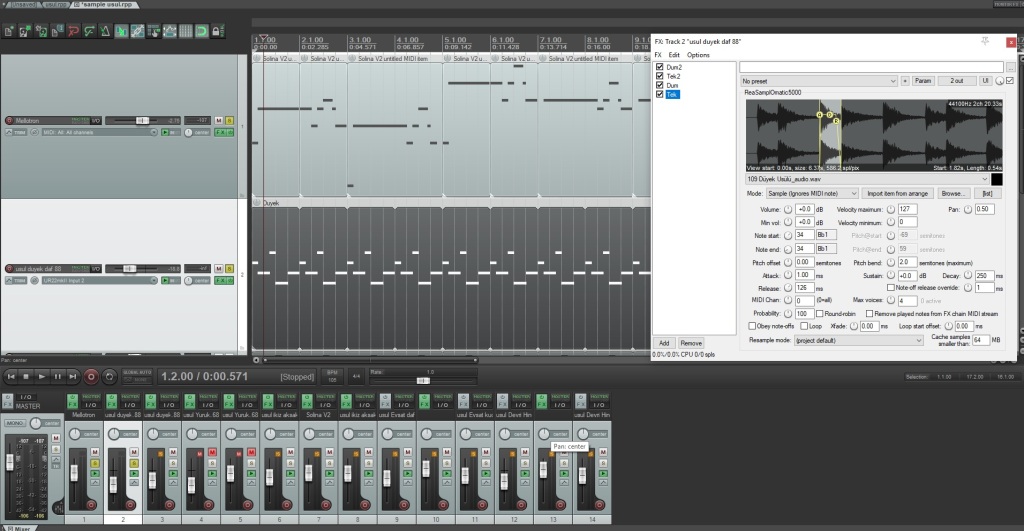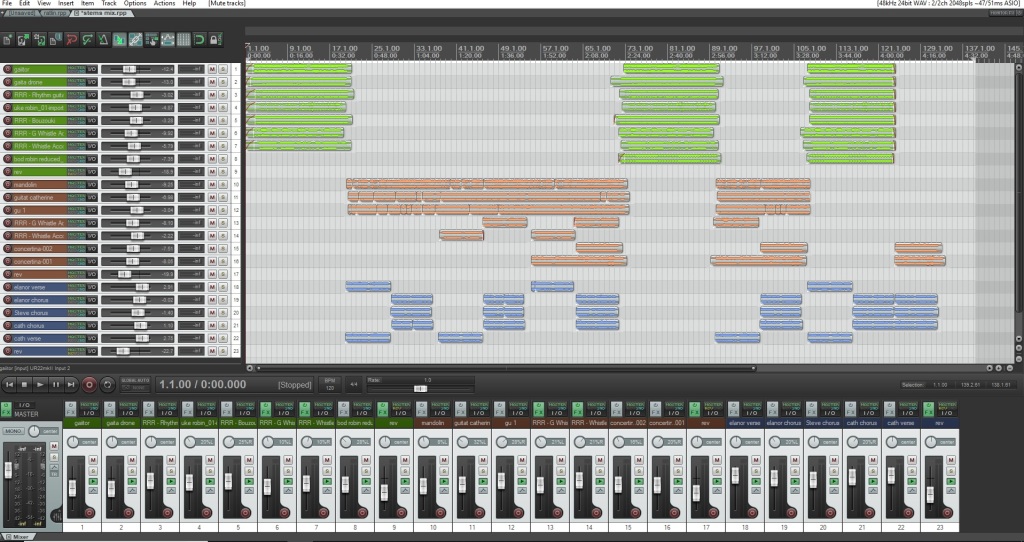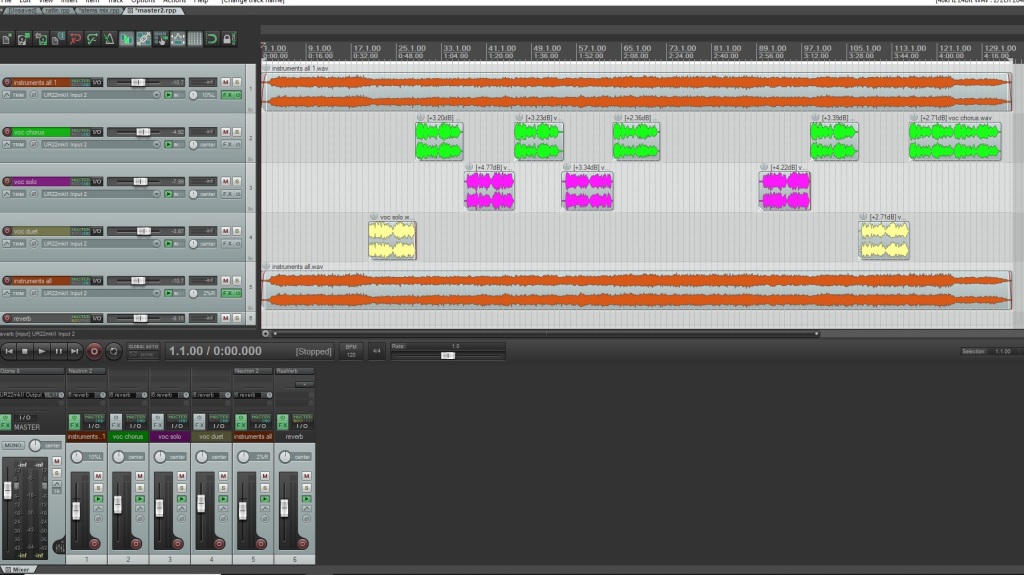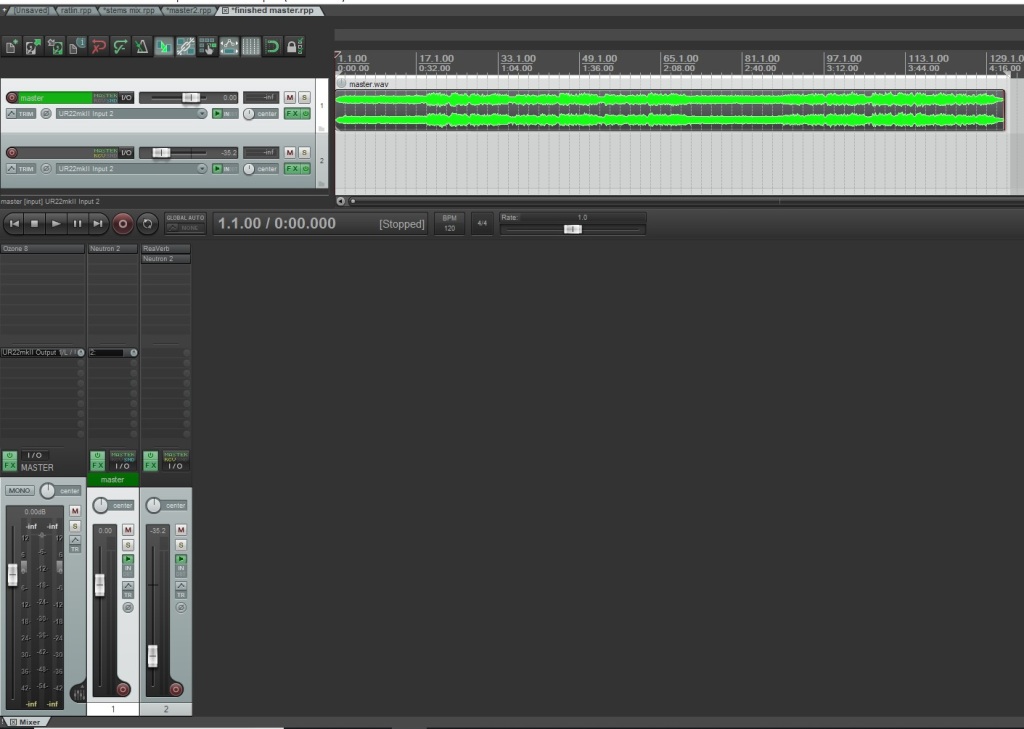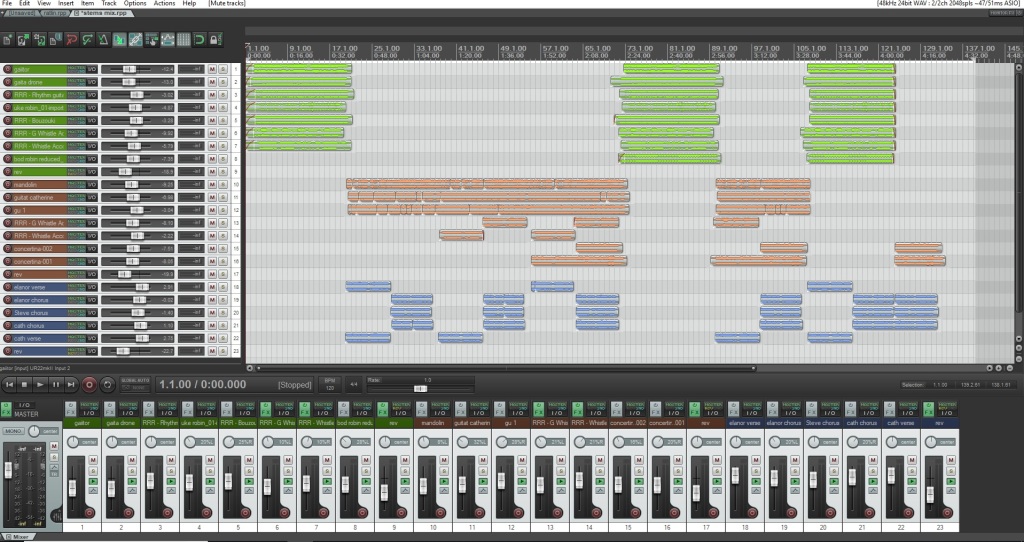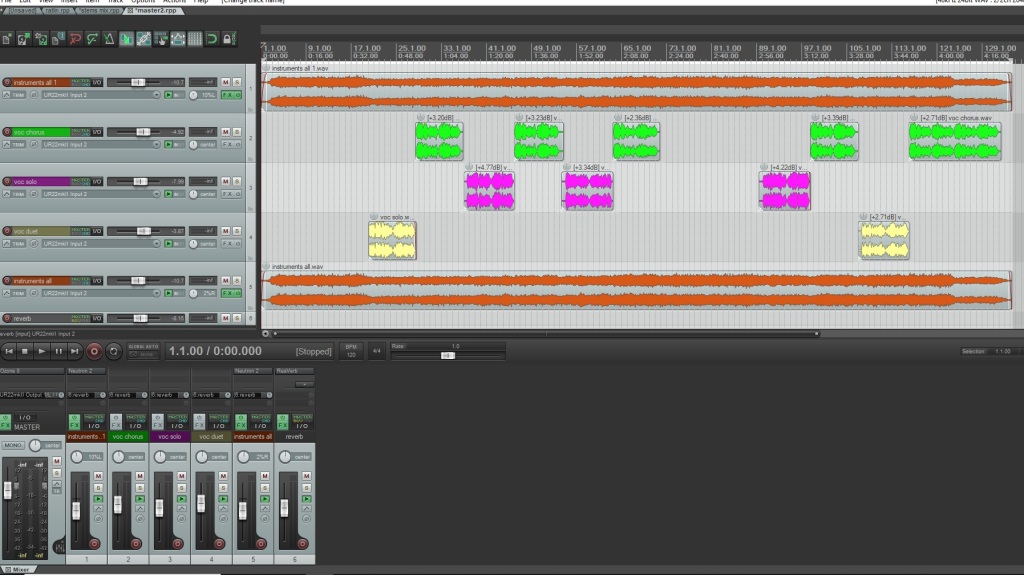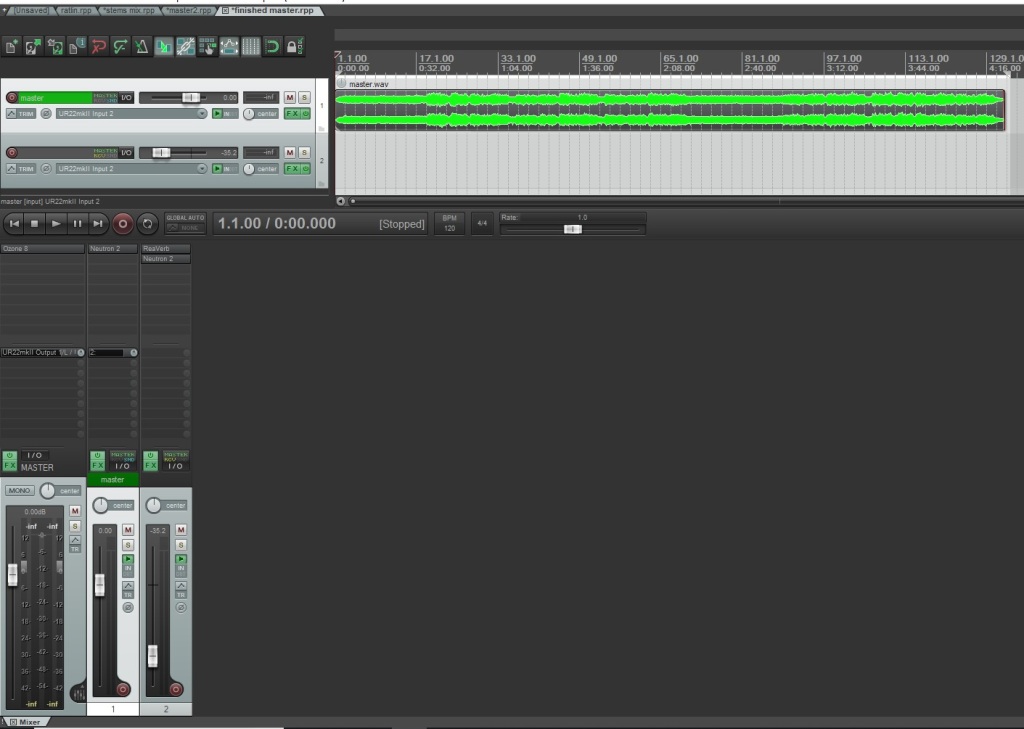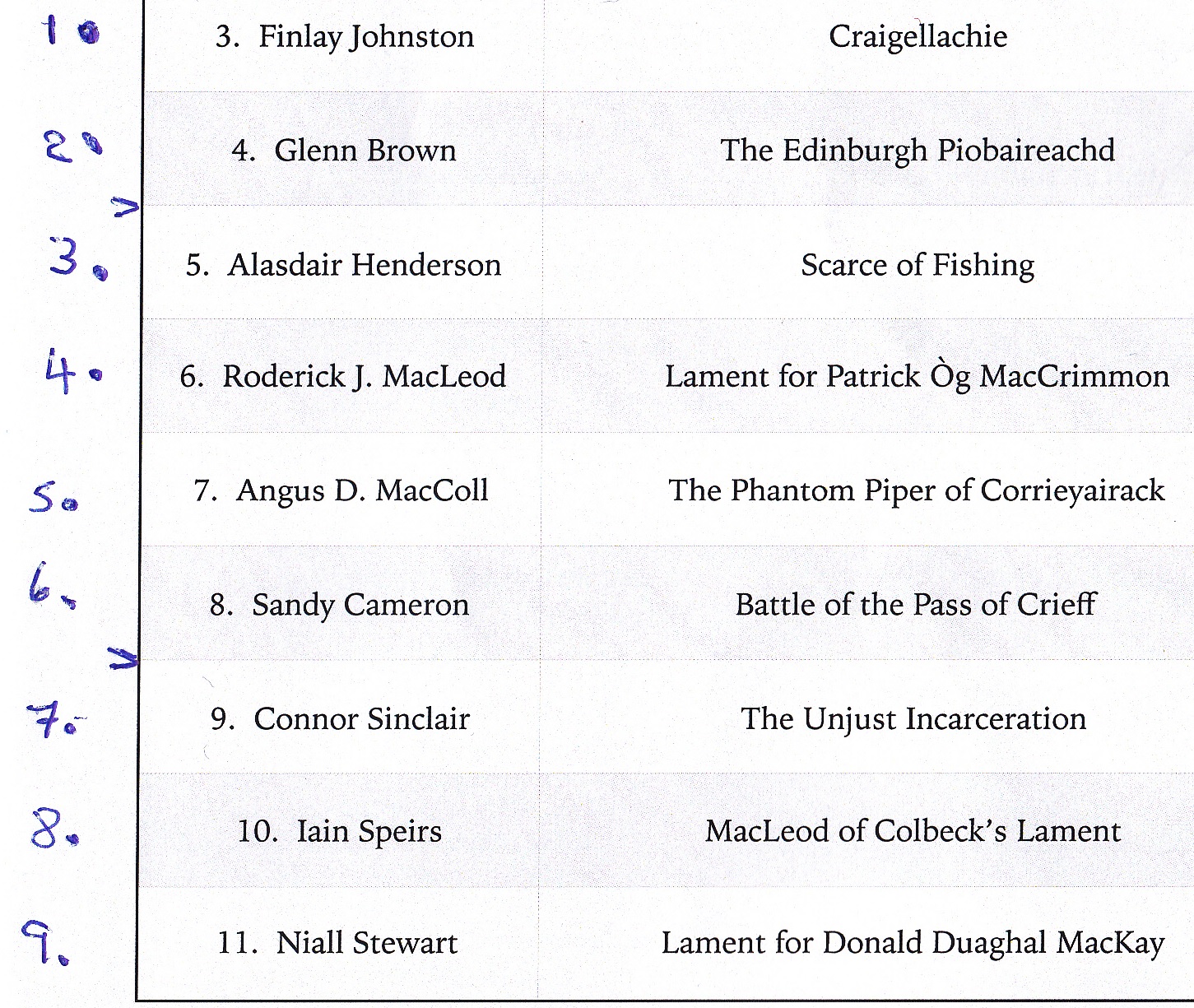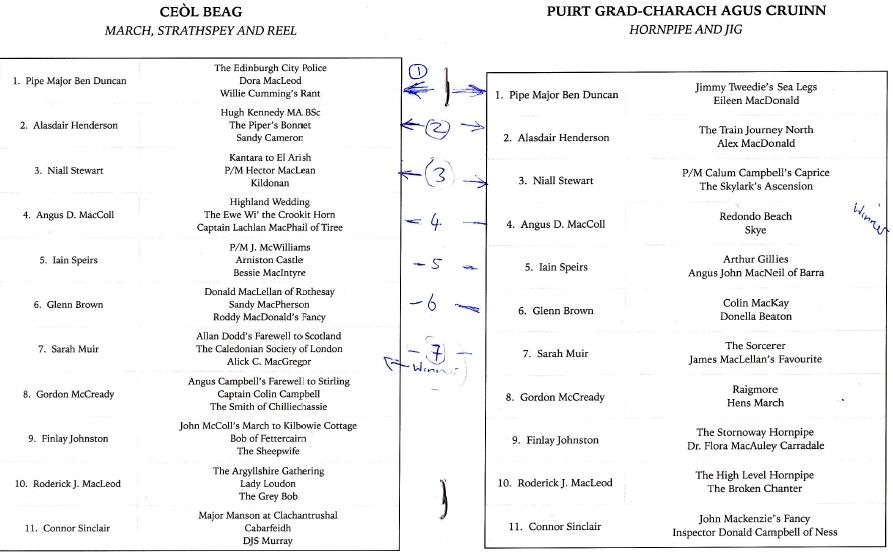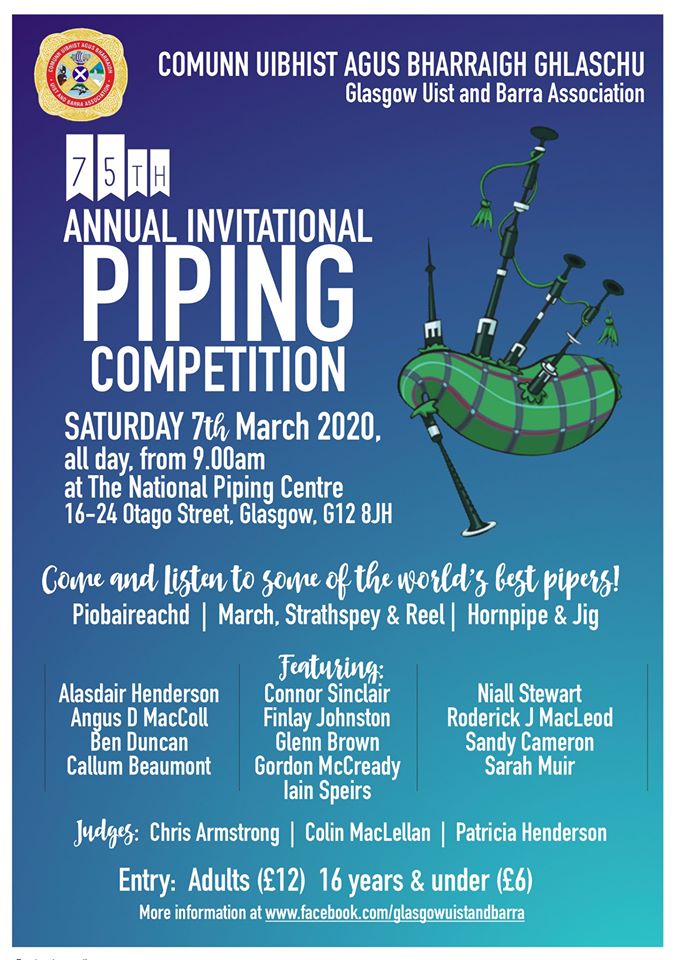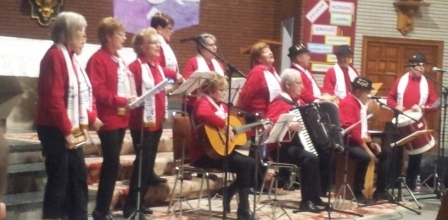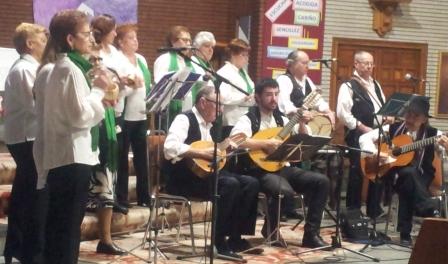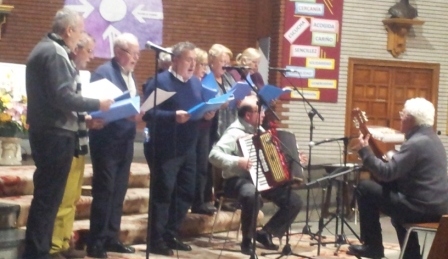I have wanted to start this blog for a long time, but I never had the confidence to do it. I have been teaching myself to “Record, Mix and Master” for a few years now, mainly from tutorials on YouTube, especially the Reaper tutorials (Kenny Gioia, Reaper TV, The Reaper Blog) as well as other ones not dealing with Reaper but which had some good points to tell about Sound Production.
Another reason to begin this blog is that I have just completed a 2 week short course at the Academy of Music and Sound which is based in Glasgow, and it is this that led me to have the confidence to start writing about Sound Production. Not that the course taught me “all” I needed to know…but by doing the course I felt that I had all the tools already, in my head, and at my finger tips, and I just needed a “confirmation and a green light” to believe I can do it. By seeing my workflow alongside others I felt confident to say “it is ok…I can do it, even if I get it wrong” (and that is the point, there is no real wrong).
I did learn a lot of things on the 2 week course, and I will write about that in the future blog postings, but after the course I felt I know “enough” to begin, to get out there and share these results. This blog is not about what I record as such, it is about sharing a process, a workflow, and to (hopefully) get some feedback and discussion about what I am trying to do and what others are doing.
My DAW of choice is Reaper, I started using Reaper perhaps about 7 years ago, and it has become an old friend, I use it all the time, not only with multi-tracking, but with all sorts of audio production.
I have been recording most of my life, and I really enjoy it. Not only my own music but I enjoy recording other people and events.
My first recording was done at the cinema when I first went to see Star Wars (perhaps I was 10 years old), I sneaked in a large radio cassette player and recorded the sound: dialogue, music, the audio effects… this I listened to when I went to bed, and by doing so I memorised the dialogue. Years later when they showed Stars Wars on TV I remembered the sounds in my brain like a long sustained delay.
I started recording and multi-tracking in the 1970s by using 2 cassette decks next to each other, I recorded an electric guitar into one cassette deck and a beat box went through the amp, and I sang and played guitar live, the other cassette deck recorded the whole event. It was an experiment and perhaps it did not work quite well…but it was fun trying.
After that I used my dad’s “Reel to Reel Recorder” to record myself, this played 2 tracks simultaneously and I could record over myself and play it back in sync with the first track. There was not much mixing involved but it taught me a lot about tempo and listening. I used the Reel to Reel to record some songs in the late 70s and early 80s. I also used it to record the bands I was in, and it also doubled up as my guitar amp!
This is not the right Model but it looked something like this: 
In the mid 90s I bought a Marantz PMD720 Cassette Tape Recorder, and this I used a lot to record my songs as well as some experimental music using a Yamaha keyboard.

Throughout the 90’s I had done a Performing Arts course (BTEC) and a Contemporary Arts course (B.A.)majoring in music, and I had composed with electronic music in my coursework and performances, using an early version of Cubase, which used to crash all the time! No one used the computer for this reason except me, and I learn some basic digital looping and I experimented with minimalism, writing notation using Sibelius, and reversing audio.
The Marantz PMD720 helped me a lot to learn about mixing and multi-tracking and “bouncing down” so I could record 8 tracks in total. A few years ago it died on me, the motor gave out and it slows down and speeds up at will…a nice effect, I fed the audio through a “Zoom Studio 1204” reverb and effects box, which I still use today.

I multi-tracked several acoustic instruments for my BA degree, and matched these to videos I recorded while I was in India collecting music. The songs I was making at the time I also recorded on the Marantz, and these recordings I put onto CD and I still have them, they sound bloody awful, as the mixing and mastering is not good. But it is a record of what I was trying to do at the time, and now I am looking back at those old compositions, I have an idea what they sounded like then.
I spent a lot of my time in the Middle East collecting music and by the time I was thinking to multi-track again the digital age was upon me (2000) and I bought a computer and a laptop. I got an early version of Cakewalk which was difficult to use and the software kept on crashing, I preferred using the old method of recording from “one computer into the other” (like the cassette method) and thus having 2 tracks. I recorded several of my Northumbrian pipe CDs this way, one computer playing the drone, which kept me in tune with the chanter, and the other computer recorded the melody. I edited the tracks using software called “Magix” it had a 2 track facility and this I used to mix both of the audio tracks using a little reverb. Magix was a great tool.
At the same time I found Audacity, and I record with this a lot when I lived in Spain. I have met a lot of people who have started multi-tracking using Audacity and on the 2 week Sound Production course I used it once again, as it is the only accessible software that converts audio into “Raw” files.
I used Adobe Audition C6 for a year or two and later I upgraded to Audition CC, but I was using electronics more and more, especially Vst’s such as Izotope and Native Instruments, and Audition did not have the facility to use them (although now it does). Audition has great plugins included within its DAW for manipulating audio, and it is easy to use and can produce great results if you are mainly using vocals and acoustic instruments, also there are some very good tutorials online especially Mike Russell’s videos, which are great for podcasts and radio/audio production, but I wanted “1 DAW to fix all” and the lack of plugins to cover electronic music made me look around for another DAW.
I tried quite a few DAWs, the demo versions, Sonar, Bitwig, Protools, Cubase, FL Studio, Studio 1, and Ableton… some of them were OK, some of them were really difficult to understand, and the workflow was complicated. Some of them you had to know what you were going to record before you started recording….an audio…a midi track? What number of audio tracks? How many midi tracks…? Etc. I just did not know.
In the end I choose a DAW called Reaper, and the beauty with Reaper was that it was easy to use, for a beginner, and you could make it as complicated as you wanted, later on, and depending on what level you were at.
If I wanted to create a track in Reaper it is the same if it audio or midi, and I could later change it without starting again. I found it suitable to my needs. It is great with midi as well as with audio, it seems to handle all sorts of plugins and it is simple (now) to Rewire other DAWs into Reaper. There are some things I would change, Reaper comes with a stack of plugins and most of them are good, but there is not a lot of thought gone into the “look” of these plugins; Care about the GUI would go a long way, but this is just a small point, it does not matter how it looks like, they work. I have used a lot of external plugins in Reaper, but I am also experimenting with the JS plugins that come with Reaper (but some detailed info about what they all do would be helpful (does anyone know?), and now that I know more about sampling and compression, EQing and effects, I can use the Reaper plugins as much as the external Vst’s.
Reaper has a great series of tutorials online and a good forum to get all sorts of tips and tricks. It seems to be an online community where members can change Reaper, or at least influencing how its future updates are organised, it is not a company who is far off and inaccessible. I just recently joined the forum and I am just learning about what it has to offer. The price is affordable too compared to other DAWs, well under 100 UK pounds.
Reaper has given me a lot over the years, and I just wanted to give a shout out for them.











































